July 4th, Independence Day, is a massively significant day for Americans. This year on July 4th, there were nationwide protests against the Trump administration’s policies, especially mass ICE deportations. South of the border, there were also large protests whose timing wasn’t simply a coincidence. Instead of protesting against mass deportations, anti-gentrification Mexico City protests actually called for mass deportations of Americans. The protestors directed their anger at digital nomads, remote workers who can stay in the country visa-free for six months at a time, in seeming perpetuity.
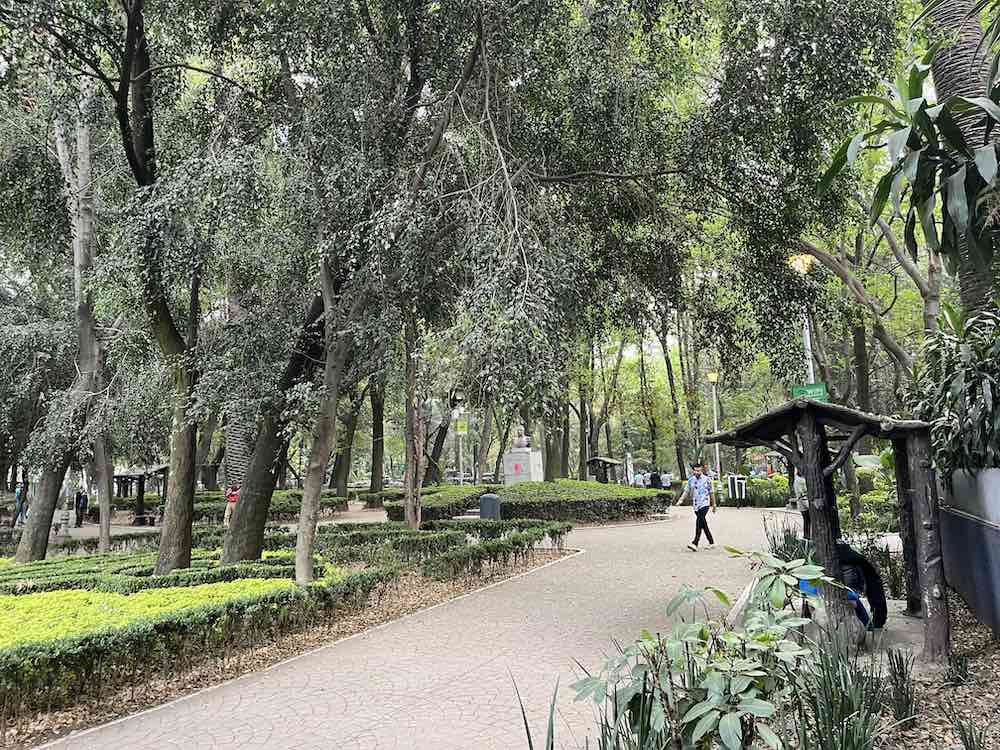
Mexico City Protests: The Demands
However, the Mexico City protests were more nuanced than just calling for gringos to leave. The demands of the Mexico City protests were rather clear. The protestors want the government to impose mandatory visas on arrivals. That’s a reasonable demand given the hoops that Mexicans have to jump through just to be able to visit the US.
It would stop people like myself from being able to spend six months in Mexico, leave, come back and get another six months visa-free.
Crucially, the Mexico City protests demanded further regulation of Airbnb. Claudia Sheinbaum, Mexico’s current president was formerly the mayor of Mexico City. During her mayoral tenure, Sheinbaum partnered with Airbnb and spearheaded an effort to get more digital nomads to come to the city.
She’s gotten her wish, to the chagrin of residents of trendy areas like Roma, Condesa and Polanco. Given the proliferation of short-term rentals, these desirable neighborhoods are getting unsustainably expensive. Longtime residents are now unable to afford to live in these areas, as a result.
Local businesses are struggling to afford rent as well, which is changing the face of these neighborhoods. Businesses are now specifically catering to a high-income foreign demographic. Local fondas and taquerias are making way for vegan restaurants, trendy bars/coffeeshops and vintage clothing shops. Menus and signs are often in English.
The last demand was that people who come to work in Mexico comply with the same rules imposed on Mexicans in the US.
While the Mexico City protests descended into threats against foreigners and vandalism, they were nominally anti-gentrification. There have been similar protests in Lisbon and Barcelona in recent years. However, the anger of the Mexico City protests was, at least partially, directed at a symptom, not the cause of the underlying issues caused by unchecked capitalism.
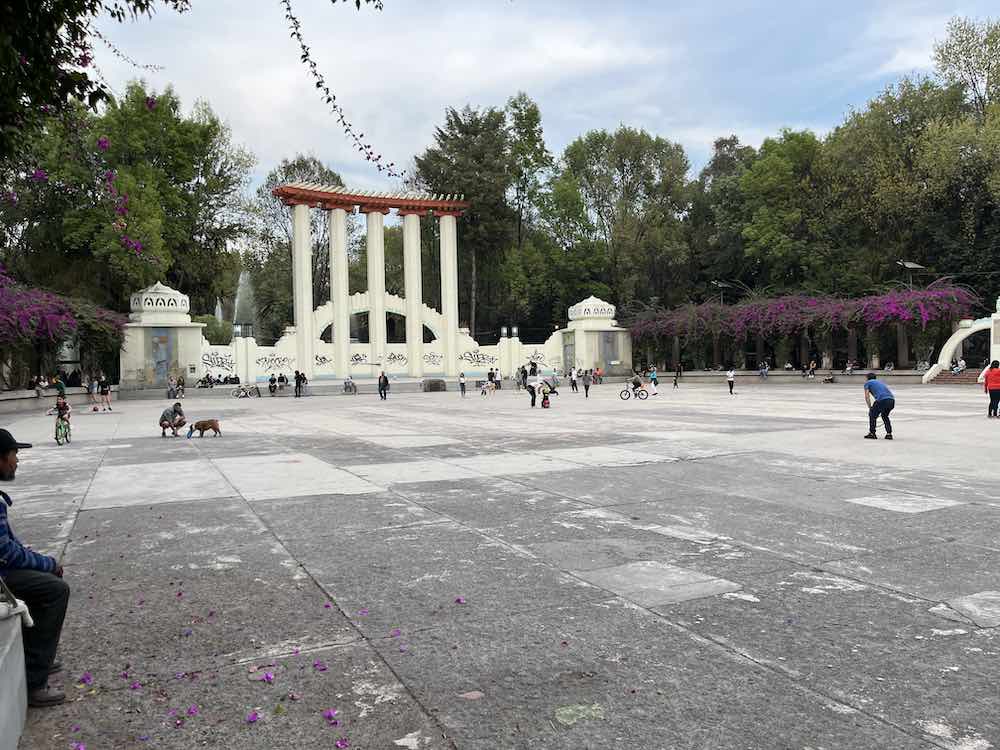
Who is to Blame for the Rising Cost of Living?
Foreigners are no doubt accelerating the pace of gentrification. Stagnant wages, inflation and income/wealth inequality in Mexico are also to blame. So too is a lack of rent control measures, at least until last year.
The conversion of long-term apartments to short-term Airbnbs and corporate ownership of real estate are also big culprits. A lack of government regulation of real estate and tourist visas and the minimum wage, which has been rising but is still very low, underlies these issues.
Mexicans have a right to be angry at the rising cost of living and their neighborhoods losing their local flavor. This is especially true in tourist neighborhoods like Roma and Condesa. Again, foreigners certainly aren’t the only factor contributing to gentrification. Still, the wave of digital nomads who arrived during the COVID-19 pandemic certainly did not help the issue.
Digital nomads can earn salaries in US dollars and pay Mexican prices but people earning Mexican wages don’t have that luxury. The average hourly pay for a US-based remote job is $27.67 an hour. Assuming 1800 work hours per year, that comes out to nearly $50,000 annually. Meanwhile, the average salary in Mexico City is just under $20,000 USD (374,000 pesos). In Mexico, housing costs have risen 286% in the last 20 years alone.
During that time, real wages have decreased by 33%. So, property owners have been making a killing while most people struggle to afford rent. While privileged foreigners may think Mexico City has cheap housing, that’s not at all the case for most people earning their salaries in pesos.
Wealthy individuals and corporations have also been speculating in Mexico City’s real estate market and making huge profits. Plenty of Mexicans have unfortunately gotten evicted as their corporate and private landlords have turned apartments into higher-profit margin Airbnbs.
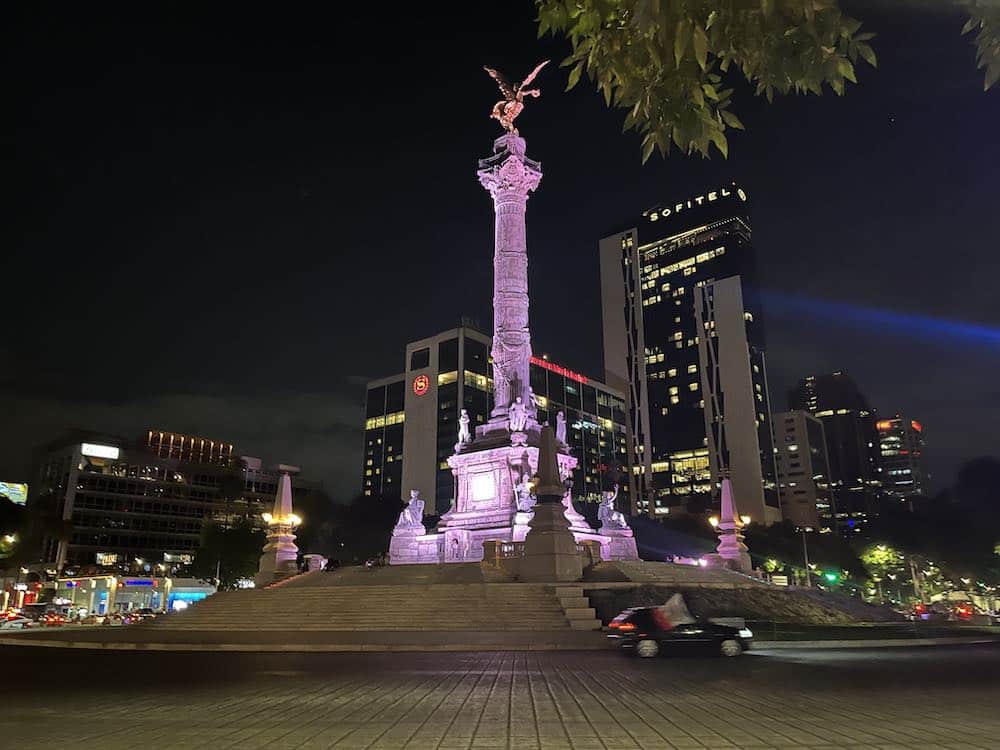
Digital Nomads
Many of the digital nomads in Mexico City have high paying jobs based in other countries. A lot of the time, they are only sticking around for a few weeks or months. With more purchasing power coming in, Mexican landlords charge higher prices in neighborhoods desirable to foreigners, because they can.
Many Mexicans migrate to the US looking for a better life economically and plenty of those flocking to Mexico City are now doing the same. The cost of living is astronomically high in places like the US and UK. As a result, creatives and retirees are heading to CDMX to pursue their passion projects and/or have a more comfortable standard of living.
Social safety nets are dwindling. The problem is going to get worse in the coming years as artificial intelligence takes jobs. Without universal basic income, there will likely be mass migrations from high cost of living countries to lower cost of living countries. This will accelerate gentrification in places like CDMX without government intervention.
It’s unfair that an American digital nomad can live in Mexico and earn significantly more than a Mexican with the same job title. Mexicans were already dealing with an alarming rise in the cost of living before the wave of foreigners came in.
There are only 50,000-100,000 digital nomads cycling through CDMX each year, in a city of 9.2 million. However, most live in Roma and Condesa, where there’s a combined population of 70,500. Now, prices are spiraling out of control.
One could certainly argue the digital nomad phenomenon is economic colonization. However, the issue is more complex. Tourism makes up 10.7% of Mexico City’s GDP and allegedly benefits 1.6 million residents of the city. So, there’s a middle ground between deporting foreigners and allowing them to continuously enter the country visa-free.
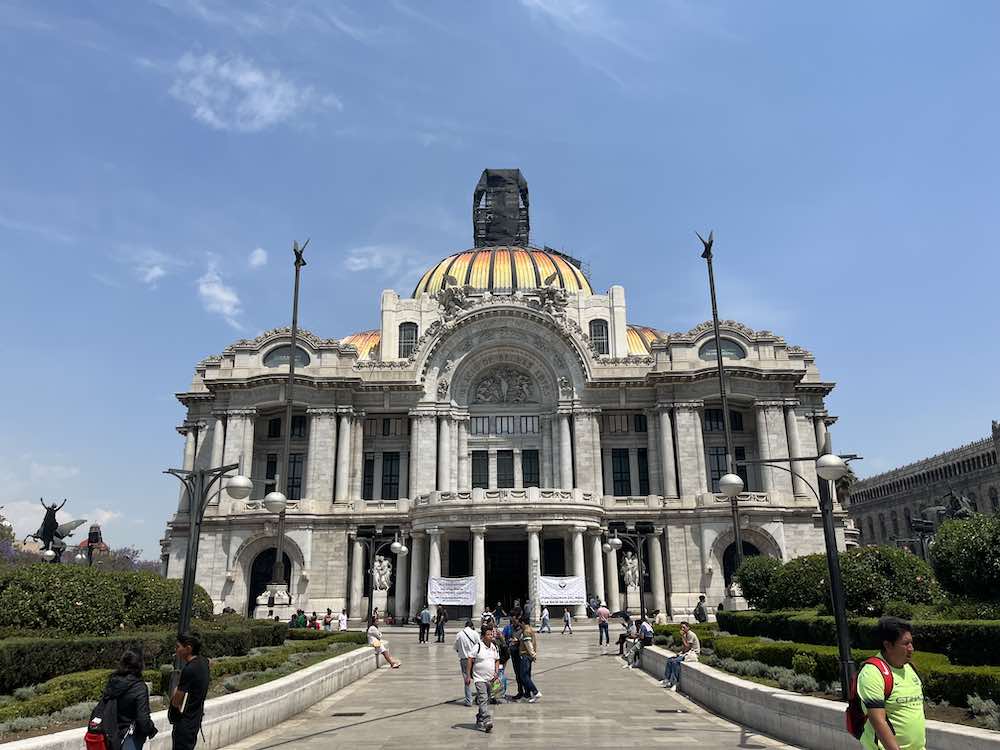
My Situation
Admittedly, as a digital nomad, I benefit from Mexico’s lax tourism policies. I lived in Condesa from January 2023 to March 2024 while I was working remotely. Given I couldn’t obtain a Mexican tax ID without official residency, and my main freelance client was based in Panama, I could only pay income taxes to the US.
I am back in CDMX now, albeit outside of the tourist bubble, and I have rarely felt mistreated. Mexicans are welcoming people but gentrification is pushing residents of CDMX to their limits.
My net worth is not high enough to apply for residency, which would allow me to pay taxes in Mexico. So, when I enter the country, my sole option is to come in on a tourist visa waiver.
I love the people, culture, food and Spanish language. However, it would be completely disingenuous to pretend that Mexico City’s affordability, compared to major US cities, doesn’t contribute to my ongoing decision to spend a lot of my time here.
I am not going to pretend I’m a “good gringo” either. On Vacation Vulture, I have capitalized on the high interest in tourism in CDMX. I have written about how tourists can spend one month in Mexico City. I’m not going to act like my presence doesn’t have an impact. I would definitely be happy to comply with any new regulations that the government employs, though.
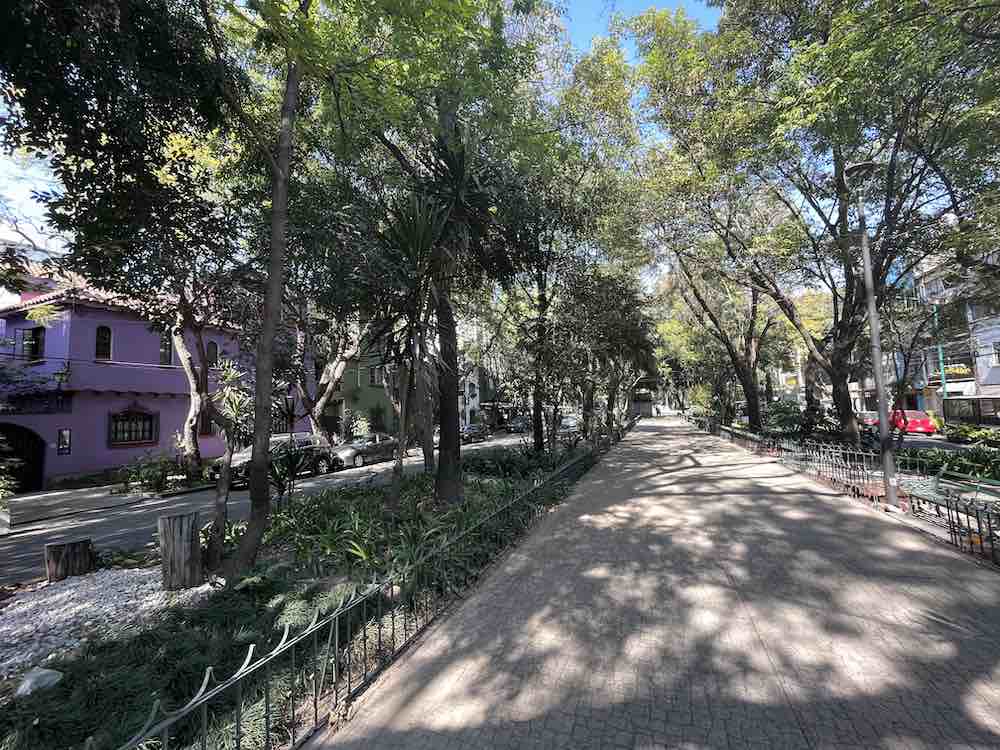
Mexico City Protests: Solutions, Redirecting Anger
One of the most immediate solutions to the gentrification problem could be stricter regulation of short-term rentals. Barcelona is phasing out all short-term rentals by 2029 while Manhattan has a de-facto ban on them.
Last October, Mexico City started requiring landlords to register short-term rental properties with the city, put a 180-day limit on rentals per calendar year and put additional restrictions on landlords who own more than four short-term rental properties. Still, one could argue they could go further like Barcelona and NYC did.
CDMX also passed a rent control law last August which limits rent increases to the previous year’s inflation rate.
If Mexico approves a visa scheme/tax for digital nomads that partially goes towards subsidized housing, I don’t think many would complain. Yes, Mexico depends on tourism. However, offering digital nomads unlimited six month tourist visas isn’t sustainable. Mexico could consider imposing a tax or requiring visas for people planning on staying more than a month or two, like the protestors demanded.
At it’s heart, though, this is a problem of capitalism run amok. Mexican landlords and business owners are benefitting heavily from the influx of foreigners by charging higher prices. Meanwhile, working class people, whose wages are stagnating while prices rise, are falling far behind.
Anger about this situation is undoubtedly justified. Although, primarily blaming foreigners, instead of an unequal distribution of resources and lack of government intervention, obscures the issue and veers into xenophobic territory. Mexico has one of the highest GINI coefficients, a measure of income inequality, in the world. Mexico ranks 162nd out of 195 listed countries/territories.
In the US, the top 10 percent own approximately 67.2 percent of wealth, the most unequal distribution among “major developed countries”. Meanwhile, Mexico’s top 10 percent own a whopping 70.2 percent of national wealth.
Conclusion
Corporate and private landlords, tour operators and restauranteurs are doing better than ever before. All the while, everyday people are dealing with all of the downsides that come with the influx of foreigners and gentrification and not typically sharing in the benefits. Exploitation in the labor market is rampant. While Mexico did raise the minimum wage from 248.93 to 278.80 pesos per day in January, the latter still only comes out to around $15.
Foreigners are an easy target for this justifiable anger. The Trump administration is targeting foreigners in the US. There is also plenty of xenophobic sentiment in Europe at the moment as well.
It’s harder to target real estate investment firms, business owners and conglomerates than it is to target foreigners. Many of the parties benefitting from gentrification are not operating in plain sight. Plus, the Mexican government certainly benefits from tourism and digital nomads even if average people don’t.
The Mexican government will have to keep tourist dollars coming in while also slowing down the pace of gentrification. If they’re unable to manage this balancing act, and income/wealth inequality continues to get worse, anger will continue to foment.
So, don’t be surprised if there are more anti-gentrification Mexico City protests in the future. This is a situation that could end up playing out in plenty of cities around the world, especially if there are major job losses due to AI. It is a cautionary tale for national and local governments in developing countries to have adequate policies in place before gentrification gets out of hand.
